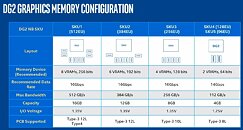
AMD Attempts to Resolve Radeon RX 6750 GRE Supply Issues in China
According to a recent MyDrivers news piece, graphics card models based on AMD's China-exclusive Radeon RX 6750 GRE GPU are "selling like hotcakes" in the region. Team Red's Radeon RX 6750 GRE was released last October, and made available in two memory configurations: 10 GB with a recommended starting price of 2219 RMB (~$312), and 12 GB going for 2379 RMB (~$335). Industry experts were surprised to hear about the mid-range Navi 22 (RDNA 2) GRE card becoming a popular choice in mainstream and budget-conscious gaming circles—as of early January, AMD has taken the unusual step of delaying its Radeon RX 7600 XT launch in China.
Chinese hardware news outlets are reporting that the 12 GB variant is selling for as low as 2239 RMB (~$315) at select retail sites—customers are reported to be snapping these cards up due to an irresistible "price-to-performance ratio," despite onboard technology being almost three years old. AMD is reported to be implementing a "strict" price control policy to prevent unbalanced supply conditions—Wccftech suggests that adjustment "instructions" have been sent out to AIB partners. The MyDrivers article points out that the policy adjustments will take time to stabilize Radeon RX 6750 GRE prices—the aforementioned 2239 RMB shop offers were still live late last week (report is dated January 26).
Chinese hardware news outlets are reporting that the 12 GB variant is selling for as low as 2239 RMB (~$315) at select retail sites—customers are reported to be snapping these cards up due to an irresistible "price-to-performance ratio," despite onboard technology being almost three years old. AMD is reported to be implementing a "strict" price control policy to prevent unbalanced supply conditions—Wccftech suggests that adjustment "instructions" have been sent out to AIB partners. The MyDrivers article points out that the policy adjustments will take time to stabilize Radeon RX 6750 GRE prices—the aforementioned 2239 RMB shop offers were still live late last week (report is dated January 26).








































































